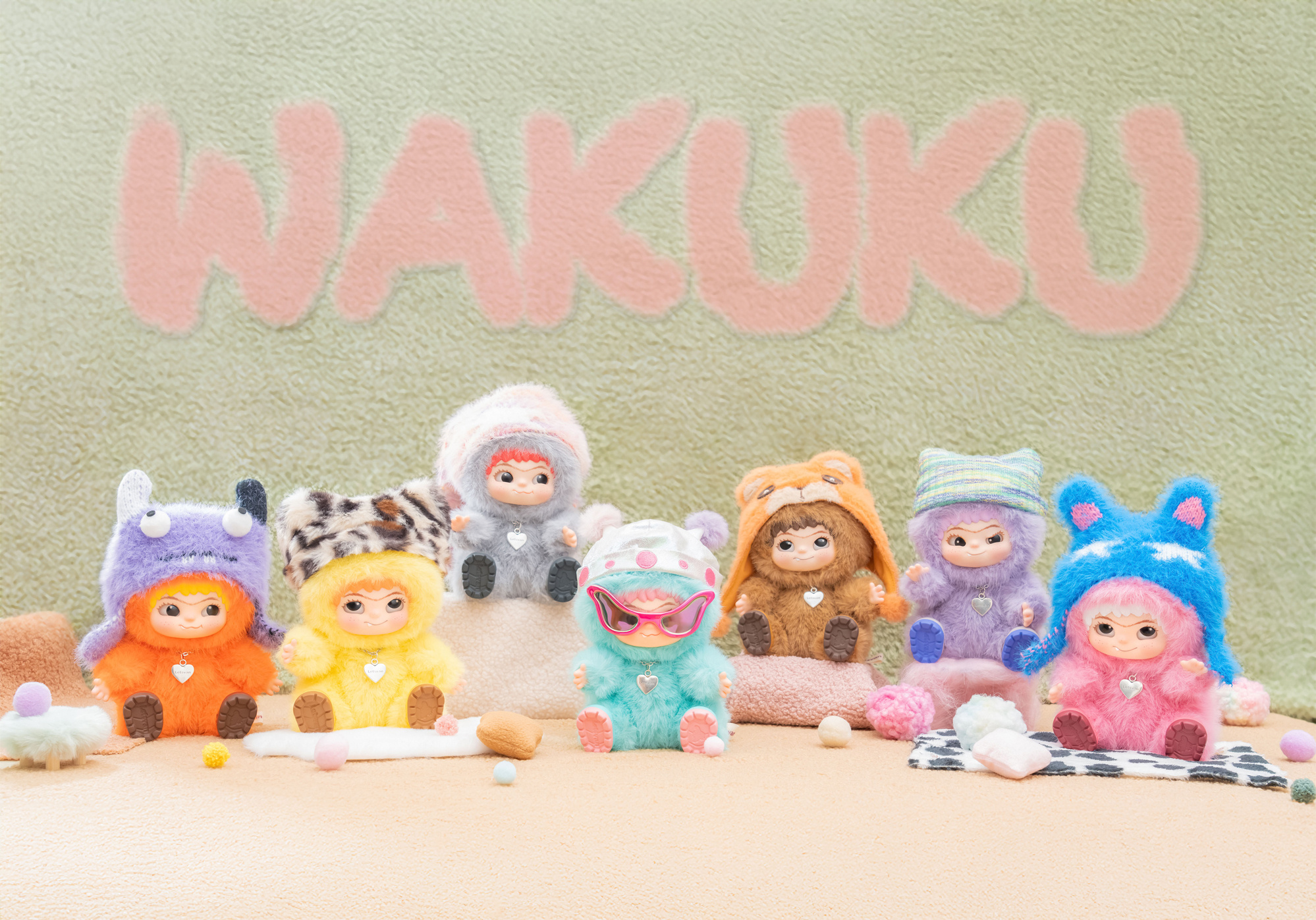WAKUKU VS LABUBU: Battle of the Hottest Designer Toys

In the fast-moving world of collectible toys, two forest-inspired characters are duking it out for top spot. On one side there’s LABUBU—the veteran vinyl figure that stormed the shelves with its “ugly-cute” charm. On the other, WAKUKU—the plush-and-vinyl hybrid newcomer backed by a celebrity blitz. Their showdown offers a perfect snapshot of how trends, hype, and nostalgia collide in today’s toy culture.
LABUBU’s Reign: From Indie Darling to Global Icon
LABUBU started as a niche, art-toy darling. With its long rabbit ears, sharp teeth, and moody expression, it struck a chord with collectors seeking something edgy. Early adopters included K-pop stars and fashion influencers who posted unplanned snaps of their custom LABUBU figures. Soon, auctions saw rare editions sell for six figures, and everyday blind-box releases flipped for thousands of dollars on resale sites.
The brand rolled out pop-up shops in Tokyo, New York, and Bangkok, each setting new single-day sales records. That kind of runaway success sent its parent company’s stock soaring—until an unexpected restock flooded the market and sent secondary-market prices tumbling overnight. The hype-driven bubble left some speculators holding pricey figures nobody wanted, sparking debate over whether LABUBU’s scarcity strategy had gone too far.
WAKUKU’s Rise: Plush Appeal Meets Star Power
WAKUKU hit the scene with a different playbook: plush softness meets vinyl sheen, plus an orchestrated celebrity push. Backed by a NASDAQ-listed entertainment firm, WAKUKU tapped stars from day one. Actress Yu Shuxin couldn’t resist her leopard-print-hat edition; actor Ding Yuxi featured WAKUKU casually on his drama set; Olympic champs Quan Hongchan and Chen Meng showed off their collections online. Even celebrity kid singer Tianxin recorded a WAKUKU theme song that went viral.
That star-studded launch led to frenzy at MINISO LAND stores—in Beijing, the “Pang Dada” series sold out in under two hours, racking up over ¥1.16 million in a single day. Social feeds filled with unboxing videos and styling tutorials, turning casual shoppers into collectors overnight.
Styling Showdown: Vinyl’s Edge vs. Plush Comfort
At first glance, both IPs lean into a mystical-forest vibe. But their design DNA diverges:
• LABUBU’s solid-vinyl build favors a sleek, minimalist “ugly-cute” aesthetic—sharp angles, bold colors, and a collectible-art sensibility.
• WAKUKU marries a soft plush body with a vinyl head, outfitted with interchangeable hats in every pattern imaginable. Its movable limbs invite play, not just display.
In short, LABUBU caters to serious collectors and art-toy enthusiasts, while WAKUKU aims for anyone who loves a tactile, customizable sidekick.
Marketing Moves: Grassroots Buzz vs. High-Impact Hype
LABUBU’s momentum grew organically. Fans shared their finds, exchanged rare pieces, and formed tight-knit online communities. This slow-burn approach built brand loyalty—when the IPO-driven restock backfired, those same fans rallied, driving an outcry that made headlines.
WAKUKU instead leaned into a top-down strategy: coordinated drama placements, staggered celebrity posts, and strategic gifting to global icons. Critics argue it lacks LABUBU’s “authentic buzz,” but there’s no denying the results: instant sell-outs, nonstop social coverage, and an avalanche of user-generated styling content.
Where to Buy—and How Much You’ll Pay
LABUBU runs on its own retail network: flagship boutiques, an official webstore, and carefully managed drops. Premium pricing is part of the allure, and the controlled distribution fuels anticipation.
WAKUKU relies largely on partner retailers like MINISO LAND, plus online platforms such as Tmall and Douyin. While this expands reach quickly, spotty stock can frustrate eager buyers. Retail prices hover around $10–$15 USD, making WAKUKU an accessible impulse buy, whereas rare LABUBU editions can command hundreds or thousands.
Aftermarket Dynamics: Bubble Risks vs. Steady Demand
LABUBU’s resale ecosystem thrives on speculators chasing ROI. Price spikes can be dramatic—but so can crashes, as we saw with that mass restock.
WAKUKU’s after-sale market trades at—or just below—retail, reflecting genuine collector interest rather than pure flipping. The downside? Fewer big windfalls for resellers; the upside? A more sustainable community focused on fun over finance.
Who’s Ahead—and What Comes Next?
Right now, LABUBU still holds the crown in prestige and global penetration. Its rich IP lore and devoted fan base won’t vanish overnight. Yet WAKUKU’s celebrity-fuelled momentum, inclusive design, and friendly price point have closed the gap fast.
The real winner will be whichever brand can balance scarcity with accessibility, hype with authenticity, and novelty with community. As both IPs evolve—LABUBU deepening its storytelling, WAKUKU expanding its range and outreach—they’re pushing the collectible-toy scene into exciting new territory. Whether you’re all-in on vinyl extremes or plush-powered play, this rivalry proves there’s plenty of room at the top for smart design and savvy marketing alike.
Related Stories

What is WAKUKU? The Adorable Trendy Toy Taking Social Media by Storm
Meet WAKUKU, the cute 'little wildling' toy that's become a viral sensation thanks to celebrity endorsements and innovative design. Discover why everyone's obsessed with this trendy collectible.

Labubu vs. Wakuku: The Battle for Collectible Toy Supremacy
Dive into the clash between Labubu and Wakuku, two quirky plush toys vying for collectible dominance. Can Pop Mart’s Labubu fend off Miniso’s Wakuku and counterfeit Lafufu while navigating a risky resale market?